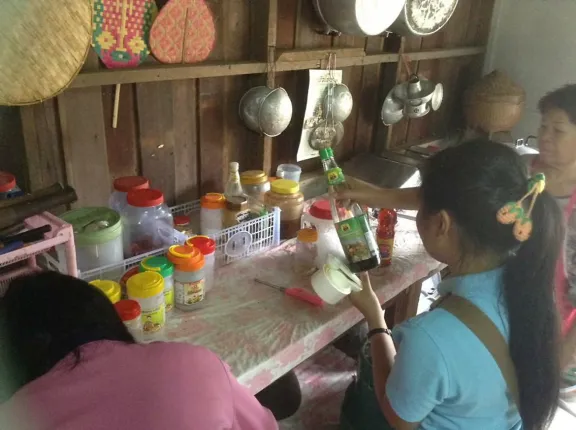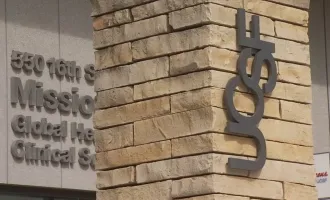
Learning And Nursing in Thailand
I was an instructor at a nursing college while living in Thailand several years ago. The experience my students and I gained was valuable and priceless. I felt that we exposed the students to the real world — a clinic without borders. It was a purposeful and meaningful experience for everyone involved.
My nursing college had adopted public health and community health nursing as their core curriculum. As an instructor, I did community home visits with my students twice a year — one to two months for each visit. The students often had to stay in the village with the villagers. (Not the instructors – we only spent a night.)
One visit stands out as particularly special to me in the course of helping to oversee this project. In a rural area of the Northeast of Thailand, I witnessed compassion and connection through nursing that informs my work to this day.
There were usually 15 to 20 students in each village staying three to five students per house. We let the villagers arrange this, male students sometimes stayed with the monks at the temple.
The main goals were to assess community needs and to provide health education, usually in collaboration with the local health agencies. They would obtain the data from our students and then used it to plan for interventions or programs for the villagers.
I remembered one visit with my students in a rural area of the Northeast of Thailand. The villagers, often elders, were always excited to see the students. Most Thai people in the rural areas often view health care professionals in a very positive way. They called everyone “Doc,” as if everyone were a physician. They always welcomed us and appreciated our visits. Thais give high respect to nurses and doctors.
Students were greeted with a welcome party, which included a traditional ceremony.
They were also often invited at the temple. The villagers would come around our students with the holy blessed white threads of cotton in their hands. They tied those white threads around our wrists and each person would say personal blessing and well-wishes.
Some of the students described how emotional the moment was. They’d say “I couldn’t hold my tears when looking at the sincere faces of the elders when they said blessings, it was an unforgettable moment as if I were their real family member.”
I had the same experience. I can promise my American friends that if they have an opportunity to be part of this welcoming ceremony, they will never forget the feeling.
The first house I visited with the students, like most of the houses in this village, two story home, half concrete – half wooden structure. The upper level was usually made from wood since it absorbs less heat during the day.
It was during rainy season when we visited, and the weather was very hot and very humid. That reminded me of one thing from my pathology class: the smell of the earth after the rain and pseudomonas pseudomallei bacteria, which has earthy like odor.
Many things happened in that rainy season in Thailand, which goes from late June to September. It created learning opportunities for my students – they learned about illnesses caused by contaminated water, dengue viral infection – especially dengue fever.
We’d look around the house, checking for anything that could let water accumulate where mosquitoes lay their eggs. We taught the villagers to have lids to cover the containers if they wanted to save rainwater. They needed to empty out the water to prevent water accumulation.
The villagers welcomed us into to their homes. They never felt we invaded their privacy. They even opened their refrigerator for us to inspect and learn about their food choices. They led us to the kitchen, bedrooms, and they listened to our advice and suggestions patiently. They were always polite and smiled most of the time. This warmth made me love being a nurse.
During the home visits, touching hands and arms of the villagers while talking to them was considered a gesture of caring. The elderly people called us child, as if we were part of their families. This is also very common in Thailand. They liked it when we called them Grandpa and Grandma, too.
I observed how my students approached the people and took notes. I could tell that they were comfortable working in the village. They walked or biked to get around the village.
We had to carry an umbrella, protect us from the sun and the rain, and from roaming dogs.
It was quite a challenge getting around the village, but was eventful. The students told me that they had to climb ladders to get into one house during one day. Some houses in the village were elevated, and the first floor was without walls. That’s where they would house their water buffalos, which are used in farming and rice fields.
A big challenge was to change or motivate the villagers to not have water buffalos underneath their house. It would create a smell of animal waste and the place for flies right underneath their bedrooms in some houses. The students explained some health issues or risks that could happen but it was not an issue we could change easily. They tried their best.
After the visit, we would go to the temple to sit down and talked about their learning experience for the day. The temple was a nice place for a meeting like this. It was quiet and we sat under the trees and talked if it was not too hot.
We used questionnaires to ask the villagers about their general health status, their physical and mental health concerns, their needs, and any other issues. The assessment questionnaires were probing tools to assess their most urgent needs.
Sometimes, the information indicated the need of getting blood pressure or blood sugar checked. If this was the case, students would set up a free mini health fair, setting up tables at the temple because it acted as a center of the village.
After the students collected and assessed the needs of the community, they planned with the local health agency to arrange a mini health fair. One doctor from a local government-run hospital had volunteered to participate. The students borrowed tools they needed from the local hospital and received small budget from them as well.
This was not hard to get everything arranged. It was a win-win event. The students helped the local hospital getting data and a report. In return, they helped our students to get the experiences the students needed.
I really like this connection and system network we have in Thailand because the benefit falls to our patients, our target population.
More than 100 villagers came to the event. They told us that they wished it happened annually. They loved having the students in the village. The most important thing they said was they felt that they were cared for. We did not eliminate all issues there, and that was OK with them, they did not expect anyone could. The villagers perceived that we cared, and that was what made them feel such affection for the students.
At the conclusion of our time in the village, the community threw a farewell party for the students. As we drove away, kids and some elders lined up along the street, waving goodbye. We missed them already. We could not thank the villagers enough for letting us be part of their community. I truly believe that we gained trust from them and that trust could be very helpful for achieving our nursing goals through the science of caring.


